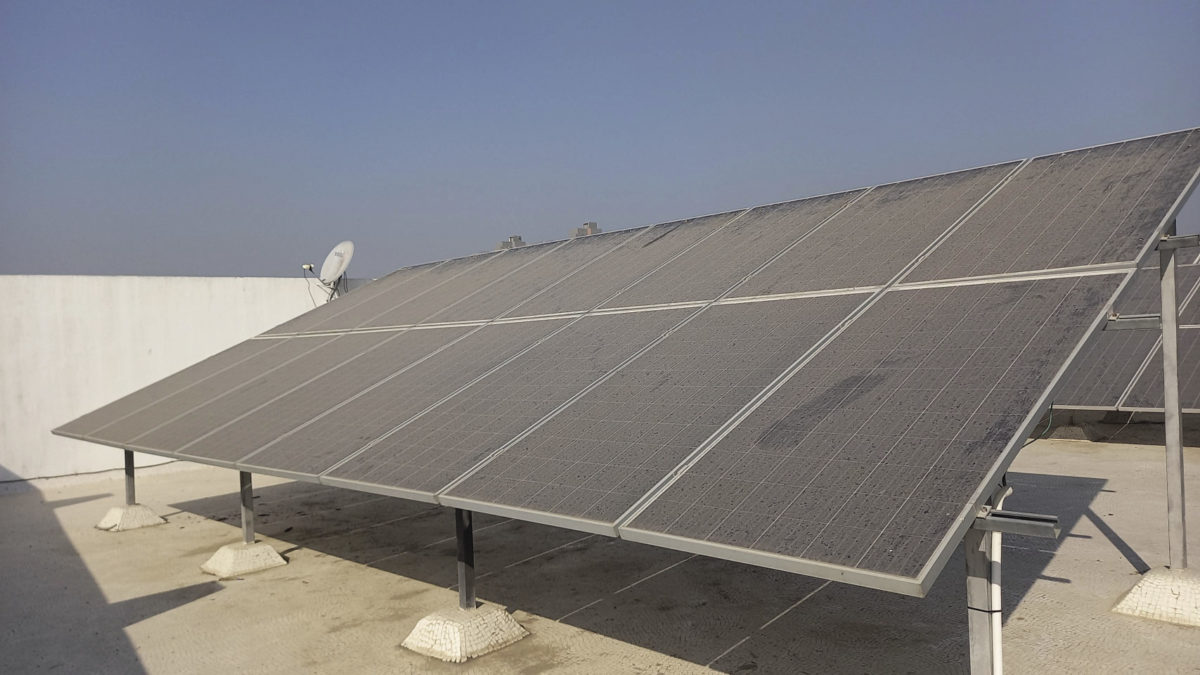From pv magazine Global
Soiling – where PV modules become coated with dust, dirt, sand or snow and thus receive less sunlight – is still an underestimated problem for solar power systems. Specialized solutions are now available in the form of anti-soiling glass coatings, automated and manual cleaning products, and models to predict the ways to use them most economically. But our understanding of the issue is still evolving, particularly as PV systems move into new regions with different environmental conditions, and the technology itself continues to change and improve.
A new report by IEA-PVPS Task 13 seeks to push understanding of soiling a step further, taking a detailed look at the mechanisms causing soiling right down to the size and shape of the individual particles that build up on module’s surface, and the surrounding conditions that lessen or worsen its impacts.
The report estimates that in 2018, soiling caused at least a 3% to 4% loss to global annual energy production from PV – amounting to lost revenue of €3-5 billion. And this is expected to increase to around 4% to 5%, and €4 billion to €7 billion this year, thanks to an increase in PV installations in regions highly prone to soiling, economic pressures, and the fact that more efficient PV modules will suffer larger losses to their output due to soiling.
The report shows that soiling is a highly site-specific issue, and that even different areas within a single site can see quite different conditions. This leads the authors to place emphasis on accurate monitoring of these as a key part of the solution.
“An ideal solution should be installable with as little maintenance as possible and be able to detect heterogeneous soiling at both module and site level with high accuracy,” the scientists said.
Meanwhile, additional work is needed to develop accurate models to predict soiling rates at a given site, with current efforts either limited to a very small area, or based only on satellite data that is too generalized to give an accurate portrayal of site conditions.
They note encouraging progress in soiling reduction – with both preventive and corrective solutions now widely available – including anti-soiling coatings and design aspects such as optimized tilt angle, as well as cleaning solutions carefully designed not to damage modules or remove the aforementioned coatings. However, the best solution for any project will depend on the site conditions, and can be a delicate economic calculation placing emphasis on accurate monitoring and measurement.
The authors also note encouraging progress in both models and technologies to deal with snow loading on modules – as solar installations move into more regions affected by snowy conditions. Here they note that further work is needed on specialized components and designs for snowy conditions, with frameless modules, steeper tilt angles, snow-shedding coatings, bifacial modules, and attention to array heights to minimize snow accumulation on the bottom edges of modules all promising approaches.
The report does not address “anthropogenic, zoological or biological sources” of soiling – such as pollution, bird droppings or moss growth. The conclusion for all though is similar, as noted in the report.
“PV soiling will continue to be a global issue, which is expected to be exacerbated by climate change with rising global temperatures and subsequent droughts,” the researchers said. “Further advancements in soiling modelling, adaptation and mitigation are critically necessary.”
This content is protected by copyright and may not be reused. If you want to cooperate with us and would like to reuse some of our content, please contact: editors@pv-magazine.com.









By submitting this form you agree to pv magazine using your data for the purposes of publishing your comment.
Your personal data will only be disclosed or otherwise transmitted to third parties for the purposes of spam filtering or if this is necessary for technical maintenance of the website. Any other transfer to third parties will not take place unless this is justified on the basis of applicable data protection regulations or if pv magazine is legally obliged to do so.
You may revoke this consent at any time with effect for the future, in which case your personal data will be deleted immediately. Otherwise, your data will be deleted if pv magazine has processed your request or the purpose of data storage is fulfilled.
Further information on data privacy can be found in our Data Protection Policy.